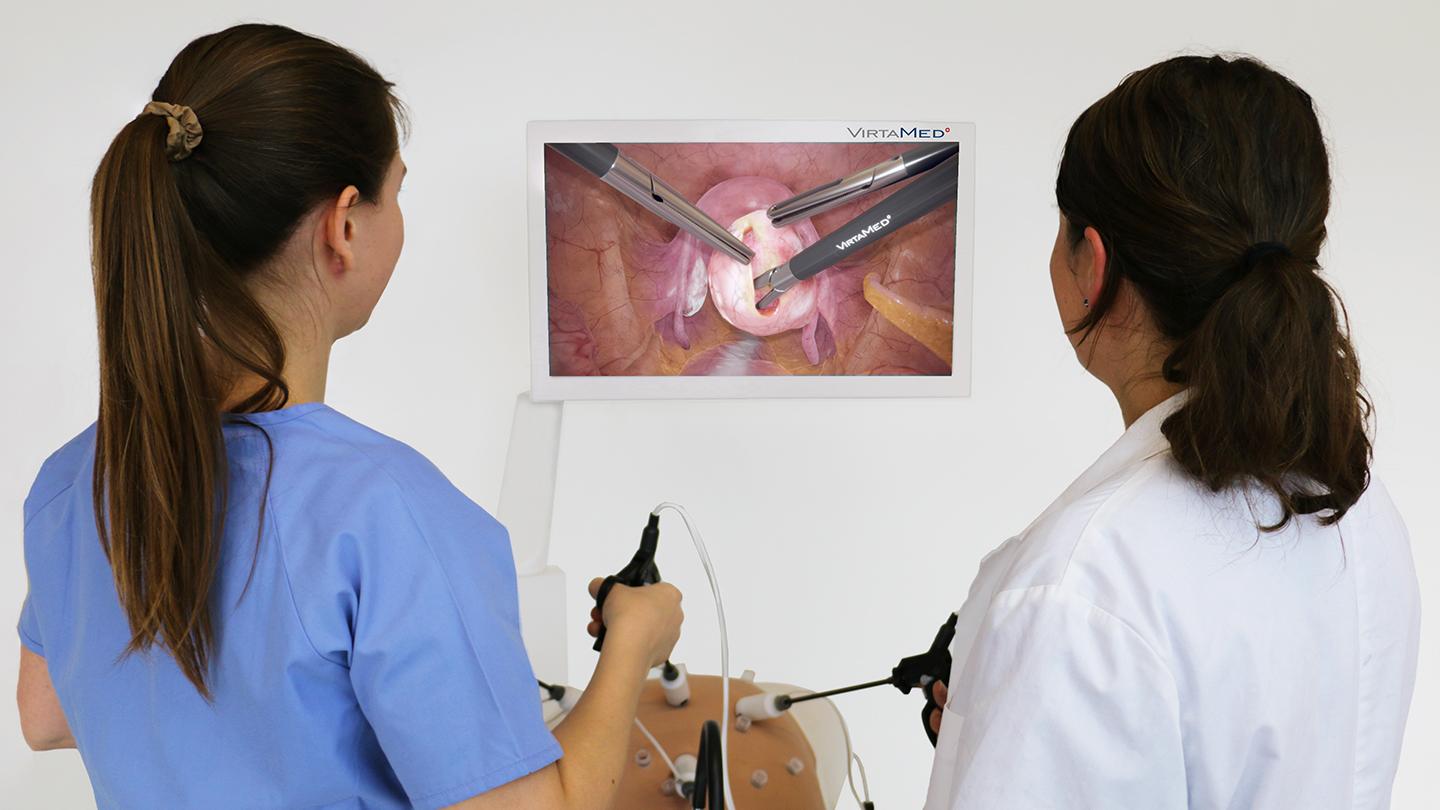
LaparoS™ Gynecological Laparoscopy Module
Train everything you need to know about laparoscopy from fertility surgery to hysterectomy.
About the Module
Start by moving your patient into the Trendelenburg position and place Active Trocars™ for your laparoscope and instruments. Stand side-by-side with a colleague for team training, or train in stand-alone mode.
Progress through training cases for diagnostic laparoscopy, anatomy identification, clipping and cutting, resection and complication handling derived from highly realistic scenarios like Hysterectomy, Tubal Sterilization, Ovarian Cystectomy, Salpingectomy, Adnexectomy, Endometriosis and Salpingotomy for management of ectopic pregnancies.
Meaningful Training Cases
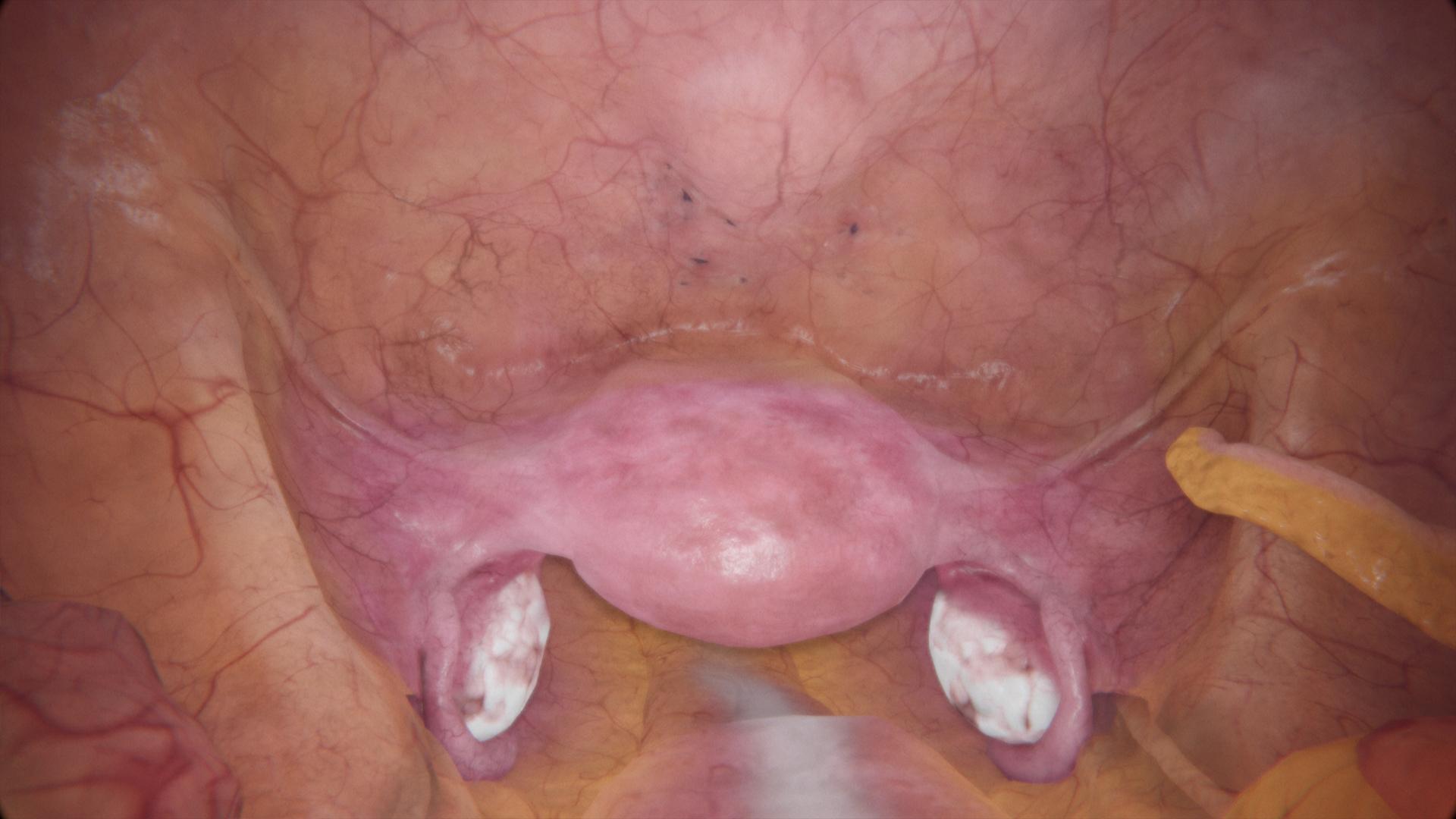
Train camera navigation in a highly realistic environment.
Learn how to inspect the abdominal cavity in a clockwise fashion. Make sure to manage your camera horizon and camera path length and visualize all key anatomical structures in a 360° diagnostic tour. Document potential findings with camera images.
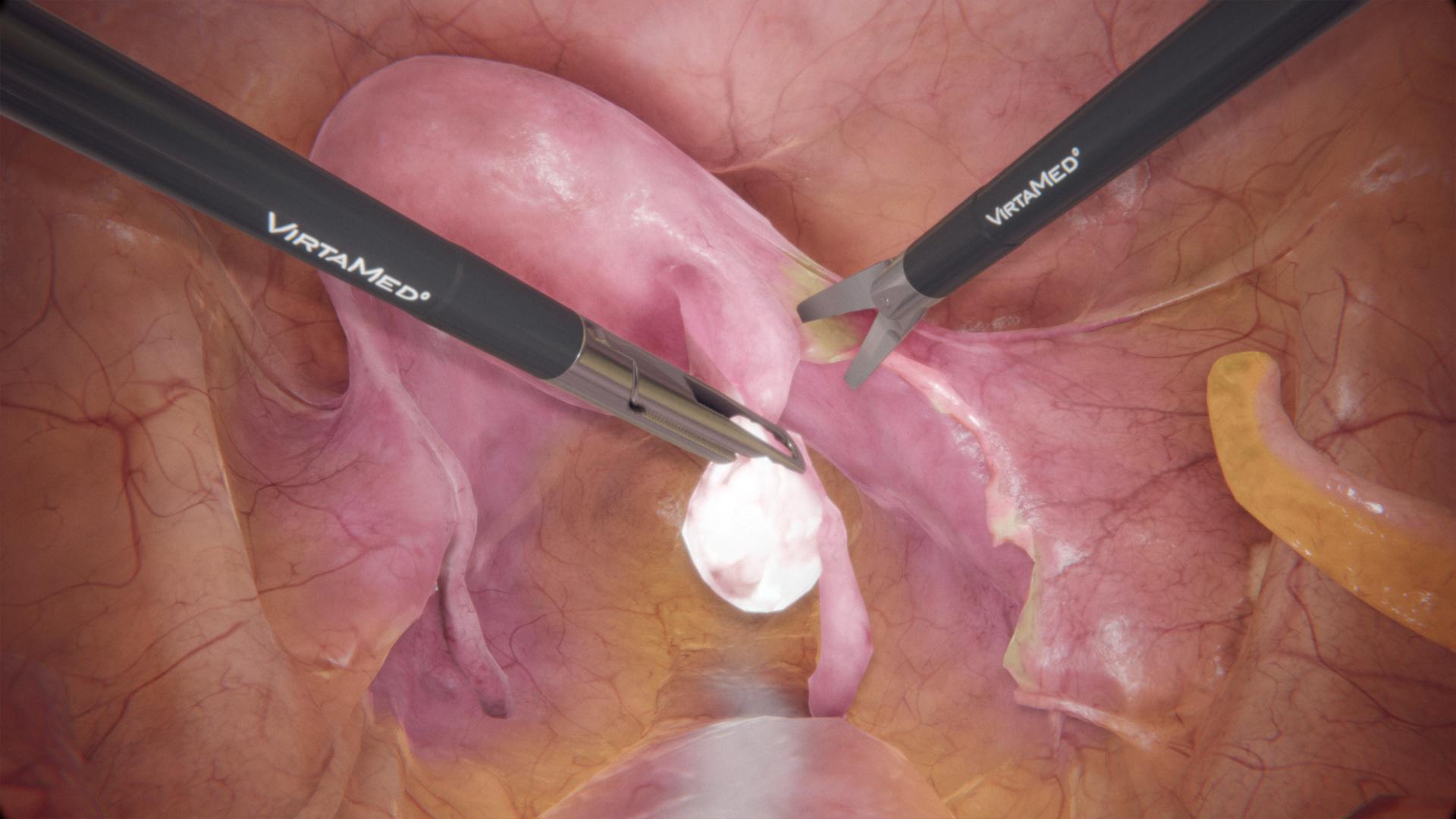
Perform a hysterectomy step-by-step.
Follow a structured training program which guides you through the key steps for total laparoscopic hysterectomy inspired by the GESEA 10 steps guidelines. First start with the identification of the ureters, then prepare the adnexa either with or without adnexectomy, next safely dissect the vesico-uterine fold and finish up with correct identification and safe ligation of the uterine vessels.
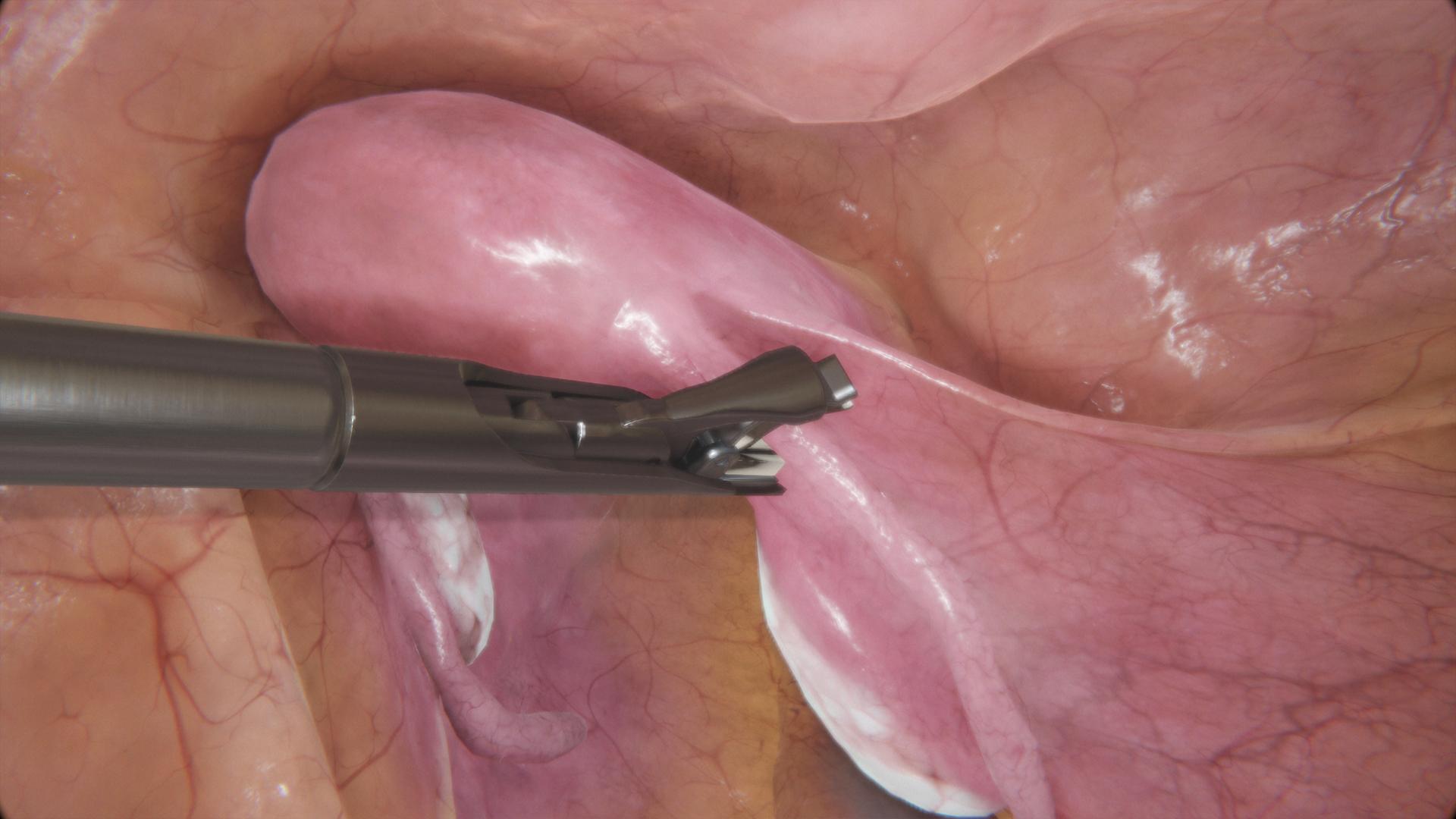
Train key scenarios in fertility surgery.
Successful fertility treatment depends on team work. With VirtaMed's simulation solutions, your team can train and learn together, to ensure great efficiency and effectiveness during real-life procedures. Perform a diagnostic tour including tubal patency test and screening for endometriosis, ligate the fallopian tubes for tubal sterilization using clips or bipolar coagulation and train different techniques to handle an ectopic pregnancy such as salpingectomy and salpingotomy.
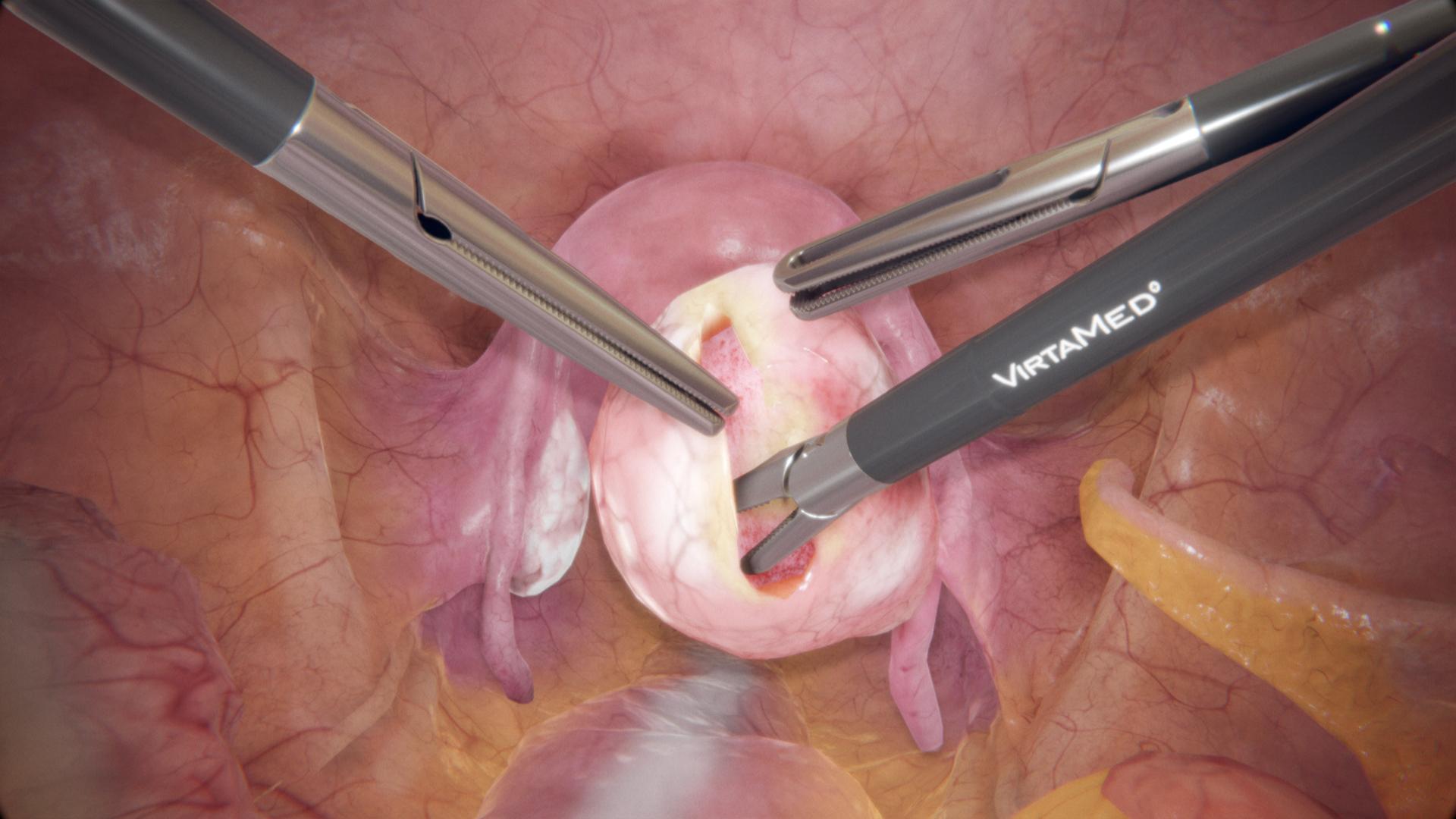
Safely extract an ovarian cyst.
Learn how to carefully extract a dermoid cyst from the ovary using electrocautery, aqua dissection and blunt peeling movements. The goal of this case is to safely and correctly dissect the cyst from the ovary without causing injury to the fallopian tube or the ureter. It shall also be avoided to permanently damage the ovary using excessive coagulation or cutting.
Factsheets & Validation
Learn more about the most comprehensive simulator for hysteroscopy and laparoscopy.